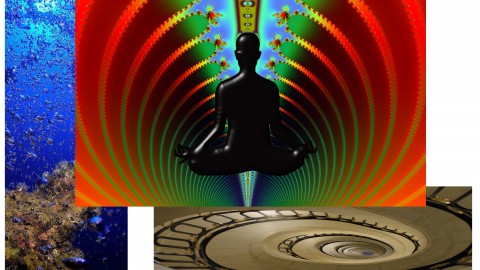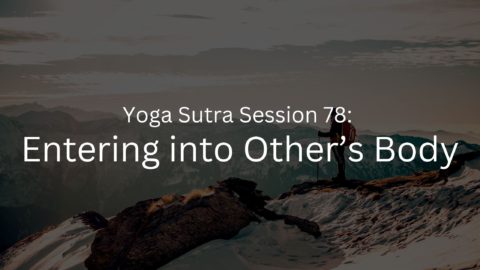Integrating Ancient Wisdom in Modern Life: Soul and Surrounding
- What is Asmita? We live on the circumference and we think this is our whole life. This circumference, and continuously living on it, creates a sort of self, a false-identification, which gives us a feeling that yes, we are somebody. But it is always trembling because it has no organic unity in it. Hence, the fear of death. If we know our real Self we will never be afraid of death-there is no question, because the organic unity never dies. Organic unity is immortal.
- Because of this identification it becomes difficult to discriminate that Soul and Surrounding are different but having organic unity with each other.
- What is the function of identity, Asmita? Patanjali explains in the Yoga Sutra, the mind – which includes your thoughts, emotions, and even the sensory input you receive from your body – is the instrument of perception through which the seer engages with the world around.
- To live in the world we need identity as form, word and quality. But to believe that we are identity missguided us and creates a world around us. Which is either from our superiority complex or inferiority complex. World is not an illusion but our perception of the world is maya, illusion.
- Stronger our perception, the more we live temporarily. This will create a silver screen to see permanence. Avidya is to live a temporary life, a miserable life. As your perception goes deep it creates an identity, Asmita. From Asmita our Identity, psychological self, social image etc will take birth. Which is the cause of our Raga, Dvesha and Abhinivesha. With this perception our discriminated consciousness becomes clouded.
- With the practise of Yoga we can clear clouds from our discriminated consciousness and transcend our Asmita, identity to Individuality. Individuality gives you mastery; it makes you very authentic, grounded, rooted. It gives you substance; you are no longer dreaming stuff. Individuality gives clarity for one’s own direction. With a discriminate mind one knows not to reject the world but transcend.
- By transcending identification with the body, feelings, perception and mental formation, which is our Individuality; we connect with the soul, permanence. By transcending we don’t resist or reject our form, word and quality of impermanence but realise our organic unity with permanence. When we transcend our Asmita we realise our organic unity of gross, subtle and fine subtleness. Organic unity of a man, his origin is immortal. It has no beginning and no end. Only mechanical unity is put together and dies. That which is put together, one day will fall apart. Mechanical unity has a beginning and an end. Organic unity has no beginning and no end – it is an eternal process.











